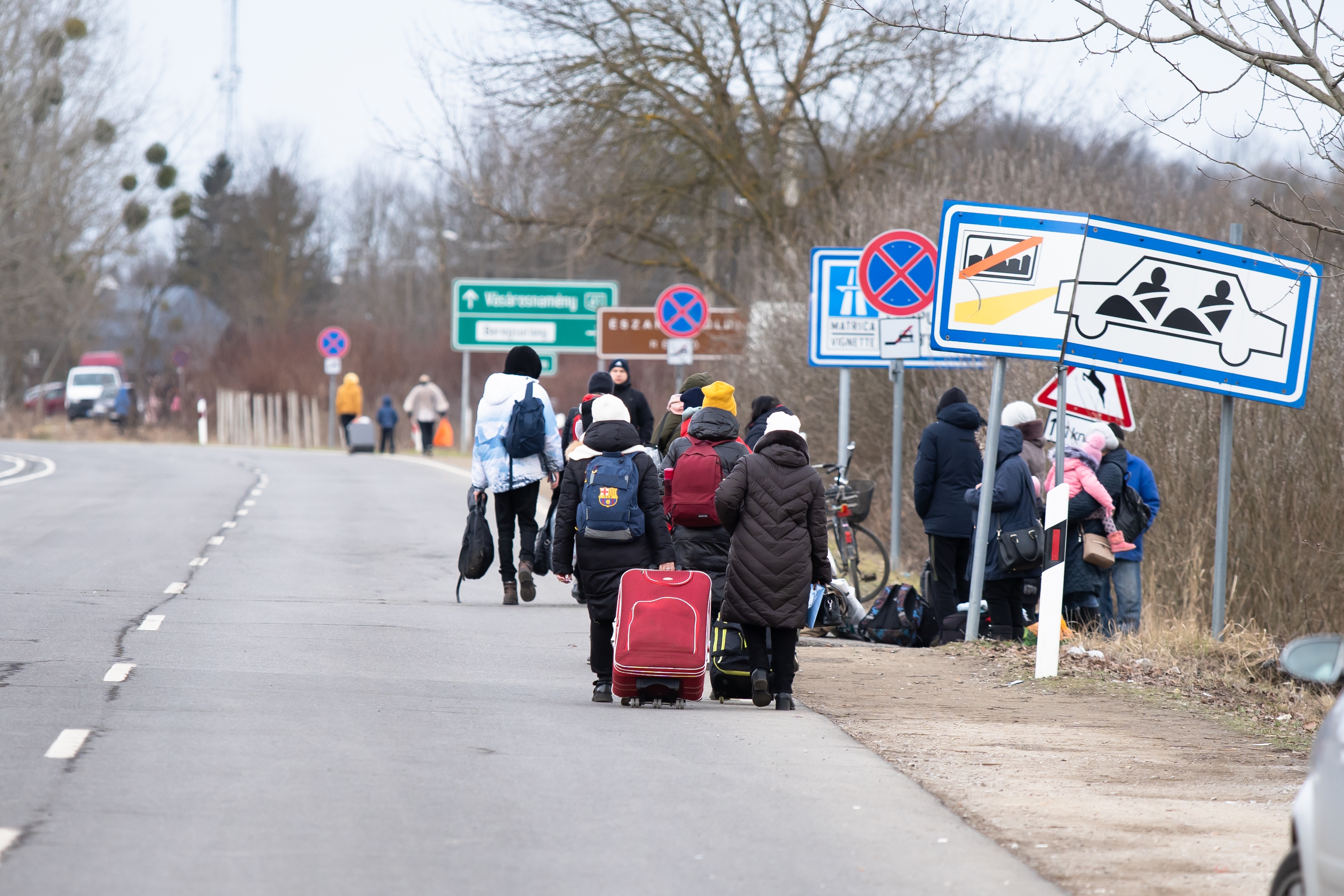Leaders from a coalition of more than 50 countries that send weapons to Ukraine met to discuss accelerating their assistance. Russian forces have launched fresh offensives in Ukraine’s east and there are concerns about the ability to withstand the attacks. Nick Schifrin reports from the Donbas region with the support of the Pulitzer Center.

As a nonprofit journalism organization, we depend on your support to fund coverage of global conflicts. Help us continue funding the hard costs of in-depth coverage of the Ukraine invasion—including travel, hostile environment safety training, and the increased security expenses that arise from reporting in war zones.
Read the Full Transcript
Amna Nawaz: Leaders from a coalition of more than 50 countries that send weapons to Ukraine met today in Brussels to discuss accelerating their assistance.
Russian forces have launched fresh offensives in Ukraine's east, known as the Donbass. And there are concerns about Ukraine's ability to withstand Russian attacks and launch its own offensive.
Secretary of Defense Lloyd Austin spoke after that meeting.
Lloyd Austin, U.S. Secretary of Defense: We're going to continue to work with Ukraine to address Ukraine's most pressing needs. Again, they're contemplating an offensive in the spring, and that's just weeks away. And so we have a lot to get done.
Amna Nawaz: We turn now to Nick Schifrin, who is in the Donbass, the main target of Russia's push. Nick and his team are reporting with the support of the Pulitzer Center.
Nick, it's good to see you.
You heard there Secretary Austin seems to have a lot more urgency in what he's saying right now. What's driving that right now?
Nick Schifrin: It's what you said, Amna.
It is the Russian offensives that the U.S. believes are under way just a few miles east of here. It is the Ukrainian need to launch that counteroffensive that Secretary Austin said is just weeks away, but also what a senior U.S. official tells me is new intelligence about helicopters and jets on the Ukrainian border.
The official tells me that it's not like the lights are blinking red, but there are accelerating concerns that already existed about Ukraine's air defense. Up until now, Ukraine has required or relied on a Soviet era air defense known as the S-300. And it's denied Russia the ability to fly freely over the country.
But senior U.S. officials tell me now that the S-300 parts and munitions will run out. And so, at some point, they will need to create a suite of all Western air defense. You see some of it there. You have American Patriots and NASAMS on the top and systems from Germany and France on the bottom.
And that requires that coalition of countries that you mentioned at the top, Amna, really sending a lot of munitions very quickly. As for what Ukraine wants, well, take a look at this. This is Defense Minister Oleksiy Reznikov showing off a Western jet. And yet U.S. officials say they still do not support the idea of sending F-16s to Ukraine.
Amna Nawaz: So, Nick, you are in the Donbass in the city of Kramatorsk. It's not far from much of the heavy fighting. What does the front line look like right now?
Nick Schifrin: Yes, so the main part of the front line is just a few miles away, because the short-term goal, according to U.S. officials, is to seize Donetsk. That is the province where I am right now.
That's the province that Russia controlled largely since 2014 alongside Luhansk. Those two provinces make up the Donbass. So the new attacks are in three places, Bakhmut, Kreminna, and Vuhledar. And the largest attacks are in Bakhmut. That is where we have seen Ukrainian forces facing off against Wagner forces.
Those are a Russian private military, many of them conscripts who have been fighting for a city that Ukraine says really represents the resistance to Russia. But U.S. officials have said that they actually don't believe it's strategically that important. And the Russians are making progress up and down this area, but at great cost. Take a look at what happened in Vuhledar in the south. Those are more than a dozen Russian tanks and armored vehicles all blown up inside a minefield. And so the Russians are still making some of the same mistakes that they have made over the last year.
But I think, Amna, the concern, especially among some U.S. officials I speak to, is the quantity. Russia invaded Ukraine with more than 150,000 troops. They now have 300,000 either in Ukraine or poised to invade Ukraine. That is something that Ukraine has to contend with on a very long front line.
Amna Nawaz: So, Nick, given those numbers, what does that mean for the battle beyond the front line, in particular, what Secretary Austin mentioned, and a potential spring offensive by Ukraine?
Nick Schifrin: Amna, Ukraine will have to achieve something that it has not yet achieved, and that is break through Russian lines that have been dug in for many months, with trenches, with vehicle barriers, with something called dragon's teeth like these, which are supposed to stop tanks.
And some are concerned that Ukraine has the ability to do that. Republicans criticized the administration for not sending more weapons more quickly to Ukraine, but the administration officials I speak to who believe that the strategy is going to work say that Ukraine doesn't need to take on Russia along this entire front line, nor does it need to rely on quantity.
It's been given more modern tactics, more modern Western vehicles, and it can use those to at least create a localized advantage and try to push through one of the Russian lines. Amna, whether that is true will determine what is truly for both sides going to be a crucial few months.
Amna Nawaz: That is Nick Schifrin reporting tonight from Kramatorsk in Ukraine. Nick, good to see you. Thank you.
Nick Schifrin: Thank you.










